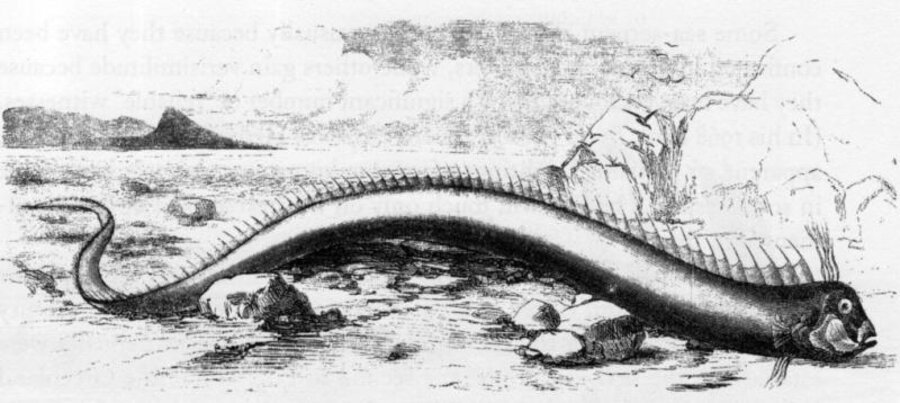Humongous sea serpent dances for the camera
Loading...
A kite-like animal slips through the water, almost iridescent as it performs what looks to be some underwater choreography: a glide backward, a slow twirl.
This dancer at the lonely bottom of our miles-deep oceans is the Regalecus glesne – or the oarfish, a name that does not quite do justice to its etherealness. And this particular serpent-like fish, caught dancing 200 feet deep in the Gulf of Mexico, is one of the first of its kind to ever be seen alive.
In the past, the oarfish has turned up as a carcass on beaches or as a dying version of itself bobbing on the ocean surface. No wonder early sailors, weaned on tales of those dead monsters seen floating out at sea, imagined a sea serpent behind every bump and bounce in their ships.
In 1996, US Navy sailors found a 23-foot oarfish beached on the Pacific coast, near San Diego. Like firemen hoisting a hose, they proudly posed with the dead, grey thing.
This serpent seen glowing near the Thunder Horse oil platform, was filmed from an ROV (remotely operated vehicle) in five videos. The researchers, part of the SERPENT Project, a collaboration between Britain's National Oceanography Centre and the oil and gas industry, released the videos along with their paper, which is published in the current issue of the Journal of Fish Biology.
The collaboration allows marine researchers to use the industry’s ROVs to dip down into the most unknown parts our world to canvas the area for the often alien-looking marine life that ghost the ocean bottom.
At first, scientists watching the footage mistook the animal for an oil pipe being lowered into the water, glittering metallically in the blue-filtered light. But then it started to swim – vertically and backward.
"What was interesting about the fish was its swimming behaviour," said Mark Benfield, in a press release. "It moved by undulating its dorsal fin in waves that propelled it backwards at quite a good speed."
Oarfish are huge – mythical serpent-sized – and estimates put the glittery fish captured in their latest video at between 17 and 22 feet in length, the press release said.








